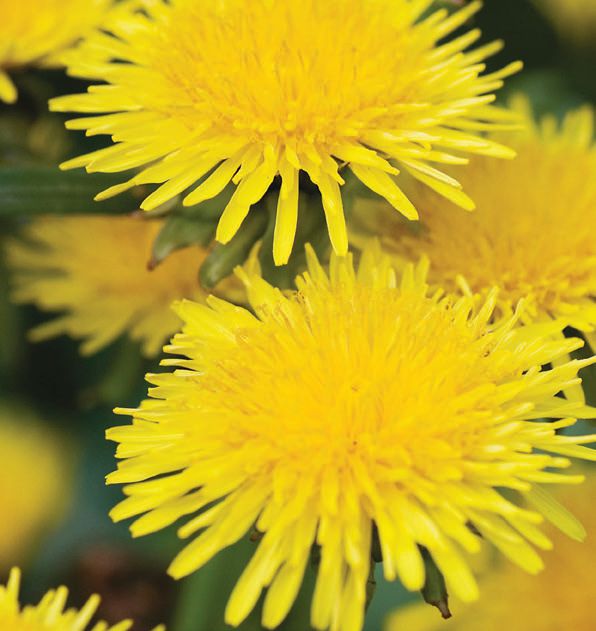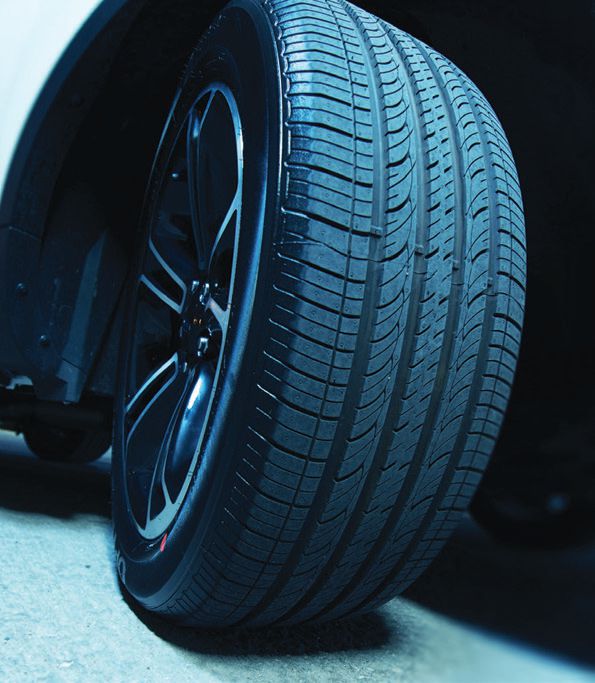Dandelion tires?
Dr. Edward P. Becker | TLT Automotive Tribology April 2015
Several automobile tire companies plan to use a new source of rubber in their tires.


Manufacturers will include friction and wear-characterization tests on tires made from rubber extracted from the dandelion plant.
www.canstockphoto.com
CONSIDER THE HUMBLE AUTOMOBILE TIRE. This is the only component of the vehicle designed to touch the ground, so all vehicle motion ultimately depends on whether tires roll or slide (or a combination of both). Studies of tire dynamics fill entire books (e.g., Tire and Vehicle Dynamics, Third Edition, by Hans B. Pacejka and Igo Besselink (
1)). However, the friction and wear of tires is dependent upon many variables. Of great importance is the specific type of rubber used.
Rubber is generally divided in two main categories: synthetic and natural. Most natural rubber today comes from Asia, primarily Thailand, Indonesia and Malaysia, and accounts for about 40% of rubber usage. The remaining 60% is synthetic rubber, synthesized from petroleum. Most tires are produced using both types.
Natural rubber is more tacky than synthetic and is therefore used in places where the rubber must bond effectively to other tire components, such as fabric and steel belt reinforcements. Synthetic rubber, on the other hand, has better resistance to chemical and thermal stresses and is used on the outer structures that are exposed to the environment. Increasing the natural rubber content of the contact surface increases friction (and therefore vehicle control) but decreases tire life. This is the basic tradeoff one must consider when purchasing tires.
Although latex (the natural component from which rubber is produced) is collected commercially from rubber trees, many other plants can produce latex. After natural rubber sources were threatened during World War I, Thomas Edison, Henry Ford and Harvey Firestone established the Edison Botanic Research Corp. in an attempt to find a solution to this problem. In 1928 the Edison Botanic Research Corp. laboratory was constructed in Fort Myers, Fla. Although Edison identified many plants that produce latex (among the approximately 17,000 he tested), none were proven to be commercially viable, due to either low concentration of latex, high impurity content or both.
Shortly thereafter research in Russia identified the dandelion species
Taraxacum kok-saghyz as a source of high-quality latex. Although not yet commercially available, several tire companies have announced plans to begin production of dandelion-based rubber tires in the near future (
2). For example, Continental Tire has gone so far as to establish a trademark name for its dandelion rubber tires (
3). Extensive testing will be required to assure these tires are at least equal in quality and performance, however, early indications are quite promising.
This is good news for the automotive tribologist, as the testing will certainly include friction and wear characterization of the tires. The consumer also will benefit from a new source of natural rubber, assuring a reliable supply of the raw material and therefore potentially lower prices. Even those who don’t own a car might benefit from the new market. Imagine a day when you go out to weed the grass out of your dandelion patch!
REFERENCES
1.
Pacejka, H. B. and Besselink, I. (2012),
Tire and Vehicle Dynamics, Third Edition, Elsevier Ltd.
2.
Click
here.
3.
Click
here.
 Ed Becker is an STLE Fellow and past president. He is president of Friction & Wear Solutions, LLC, in Brighton, Mich., and can be reached through his website at www.frictionandwearsolutions.com
Ed Becker is an STLE Fellow and past president. He is president of Friction & Wear Solutions, LLC, in Brighton, Mich., and can be reached through his website at www.frictionandwearsolutions.com.